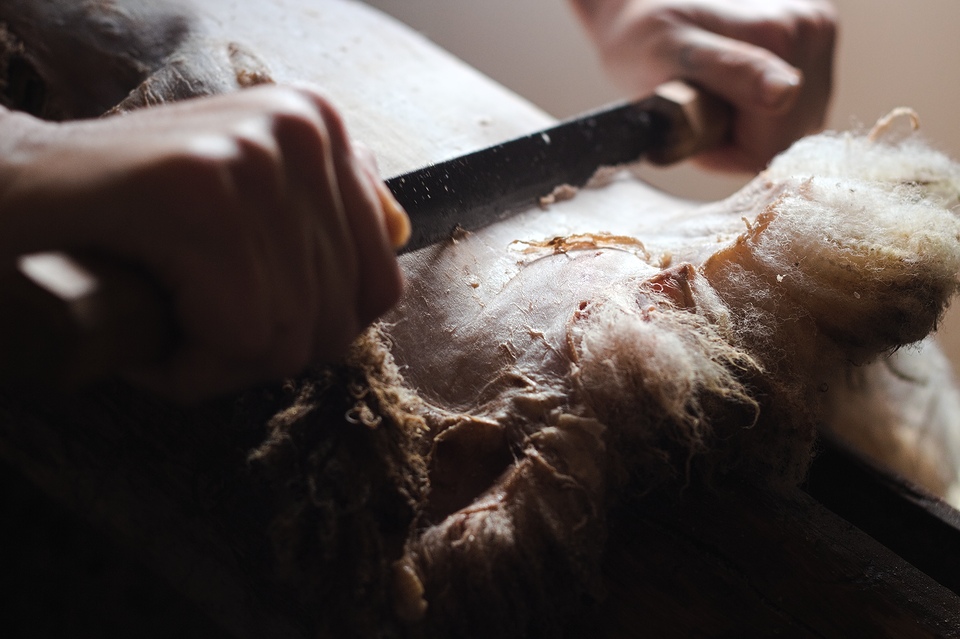Natural Hide Tanning
Long before we were weavers, we were hide tanners.
Sheepskins combine two incredible textiles: leather and wool, which can be used whole as rugs, throws and bedding, or crafted into vests, slippers, gloves, hats and other warm and water resistant outerwear.

Much of the knowledge of tanning without chemicals in pre-industrial cultures where sheep were domesticated has been lost, or brutally stolen and suppressed. The smoke tanning traditions preserved in Indigenous communities of Turtle Island / North America do not always directly translate to furs and sheepskins, particularly in the rainforests of Appalachia. Although many will claim that using tannins was unique to European tanners, there are some records of certain tannin-rich plants being used by Turtle Islanders as "dyes"; undoubtedly these tanners and garment makers had a rich understanding of the qualities of tannins that was stamped out by colonization.

The process first involves removing fat, flesh and a membrane layer that would prevent the tanning agents from penetrating into the skin. This is where the alchemy begins: flesh to flesh, sinew to sinew, the slow transmutation of a perishable skin into leather.
But can't you just tan with salt?

Salt is a preservative, but it merely slows down bacterial growth and does not permanently alter the skin. I think that some of the confusion arises from the fact that many cultures have simply fleshed and dried hides - making rawhide - and in many cold or arid environments this would work fine for short term use, but is not a stable leather.
True tanning is a much more involved process which permanently alters the proteins of the hide to create a lasting product that will not shrink or stiffen after exposure to water. Though the word tanning comes from tannins, not all tanning methods require tannins!

Brain tanning or perhaps more accurately smoke tanning, uses aldehydes formed in the combustion of woodsmoke to create the oldest form of leather made by all human cultures, but best known through buckskin made in Turtle Island.
Oil tanning as in the chamois of Europe creates a similar leather to buckskin, but in this process it is the denaturing of certain oils (like cod liver) and not smoke that forms the necessary aldehydes.
Bark tanning which is now commonly known as veg(etable) tanning uses the tannins found in certain leaves and bark to create a firmer leather than buckskin and chamois, usually with the grain left intact, and can also be wet formed. Most commercial "veg tan" unfortunately also uses chemicals to speed up this traditionally slow process.
There is also mineral tanning or tawing with alum, which creates a white leather and has been found in the 5,000 year old grave goods of Mesopotamia, but it is not washable and is less stable than tannin- or aldehyde- tanned leathers.
Other obscure and localized tanning traditions exist, including the bog tanning of far northern Europe, which utilizes the highly acidic and tannic environment of sphagnum peat bogs to do the bulk of the work and creates a less flexible leather than using veg/bark tanning.

Many of these methods can also be layered upon each other -- such as smoke tanning and then bark tanning, or alum tawing and then smoke tanning -- creating unique textiles that retain some of the characteristics of each method. To learn more about these methods, including hands-on classes that meet online and in person, see Tanning Resources.
At this time, I primarily offer sheepskins and leather made in the bark tanned tradition, for more information see about my process.
See our shop for available hides.
